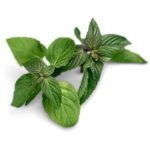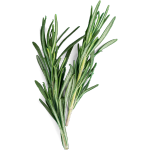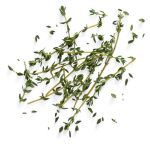Tips for Managing Diabetes and Heart Health
Diabetes is a condition that affects the way the body processes blood glucose. High blood glucose levels (also known as hyperglycemia) can damage your body in different ways and make you more likely to develop heart disease or stroke. The good news is that you can help manage both—your cardiovascular risk and your diabetes—by eating smart and making healthy lifestyle choices.

 Pairs well with vegetables (including cauliflower, corn, cucumbers, eggplant, peas, potatoes, spinach, tomatoes, and zucchini), fruits, grains, pasta, pulses (beans), eggs, cheese dishes, chicken, and tuna.
Pairs well with vegetables (including cauliflower, corn, cucumbers, eggplant, peas, potatoes, spinach, tomatoes, and zucchini), fruits, grains, pasta, pulses (beans), eggs, cheese dishes, chicken, and tuna. Pairs well with vegetables (including bell peppers, carrots, corn, cucumbers, sweet potatoes, and tomatoes), fruits (including avocado), grains, pulses (beans), and chicken.
Pairs well with vegetables (including bell peppers, carrots, corn, cucumbers, sweet potatoes, and tomatoes), fruits (including avocado), grains, pulses (beans), and chicken. Pairs well with vegetables (including bell peppers, carrots, corn, cucumbers, eggplant, green beans, peas, potatoes, and tomatoes), fruits, grains, yogurt, red meat, and chocolate.
Pairs well with vegetables (including bell peppers, carrots, corn, cucumbers, eggplant, green beans, peas, potatoes, and tomatoes), fruits, grains, yogurt, red meat, and chocolate. Pairs well with vegetables (including artichokes, bell peppers, corn, eggplant, mushrooms, onions, summer squash, and tomatoes), pasta, pulses (beans), eggs, fish (including anchovies), chicken, and red meat.
Pairs well with vegetables (including artichokes, bell peppers, corn, eggplant, mushrooms, onions, summer squash, and tomatoes), pasta, pulses (beans), eggs, fish (including anchovies), chicken, and red meat. Pairs well with vegetables (including bell peppers, cabbage, peas, potatoes, and tomatoes), apricots, oranges, pulses (beans), soups/stews, eggs, fish, chicken, and ham.
Pairs well with vegetables (including bell peppers, cabbage, peas, potatoes, and tomatoes), apricots, oranges, pulses (beans), soups/stews, eggs, fish, chicken, and ham. Pairs well with vegetables (including bell peppers, cabbage, carrots, cauliflower, corn, mushrooms, onions, parsnips, and potatoes), blueberries, lemons, pulses (beans), soups/stews, ricotta, eggs, fish, chicken, duck, rabbit, and red meat.
Pairs well with vegetables (including bell peppers, cabbage, carrots, cauliflower, corn, mushrooms, onions, parsnips, and potatoes), blueberries, lemons, pulses (beans), soups/stews, ricotta, eggs, fish, chicken, duck, rabbit, and red meat.







